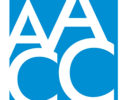Report roundup
By AACC 21st Century Center Staff
October 23, 2018
A monthly roundup of reports of interest to the community college sector.
Here are three reports you should know about this month.
- The number of manufacturing jobs may be declining, but the middle-skills pathway is still experiencing strong growth, according to a new report from the Georgetown University Center on Education and the Workforce. As the number of jobs for people with just a high school diploma has decreased, the middle-skills pathway — which includes associate degrees and certificates — has grown. Between 1991 and 2016, 3.2 million good jobs were added for workers with associate degrees. Good jobs is defined as those paying at least $35,000 a year and averaging $56,000 for workers with less than a bachelor’s degree. “Not everyone needs a BA to get a good job,” the report’s authors said. “Evidence is mounting that programs that are well aligned with the labor market can lead those who complete sub-baccalaureate degrees and awards to attain good jobs.”
- This Brookings Institution report addresses ways to help more community college students complete college by removing structural and motivational barriers. “The key takeaways are that making it easier for students to navigate the college environment and connect their coursework to their lives can improve student outcomes,” the report’s author says. The guided pathways model can play a vital role in this. To keep students on their academic trajectory, “they need to both see the destination (the careers and earnings an education will provide) and the pathway to get there.”
- Students in high schools serving high populations of minority students are less likely to have access to courses needed to prepare them for college and career, according to a report from The Foundation for Excellence in Education. For instance, Algebra I or higher is not offered in 25 percent of those schools. The report focuses on equity and access to college and career pathways. And 29 percent of those schools with high minority student populations, Biology or higher is not offered. Suggestions for addressing these access gaps include conducting a statewide audit of courses, creating policy solutions, and making sure that families know about the courses necessary for college and career readiness. The report’s authors also advocate for expanding access to career and technical education opportunities in high school.



